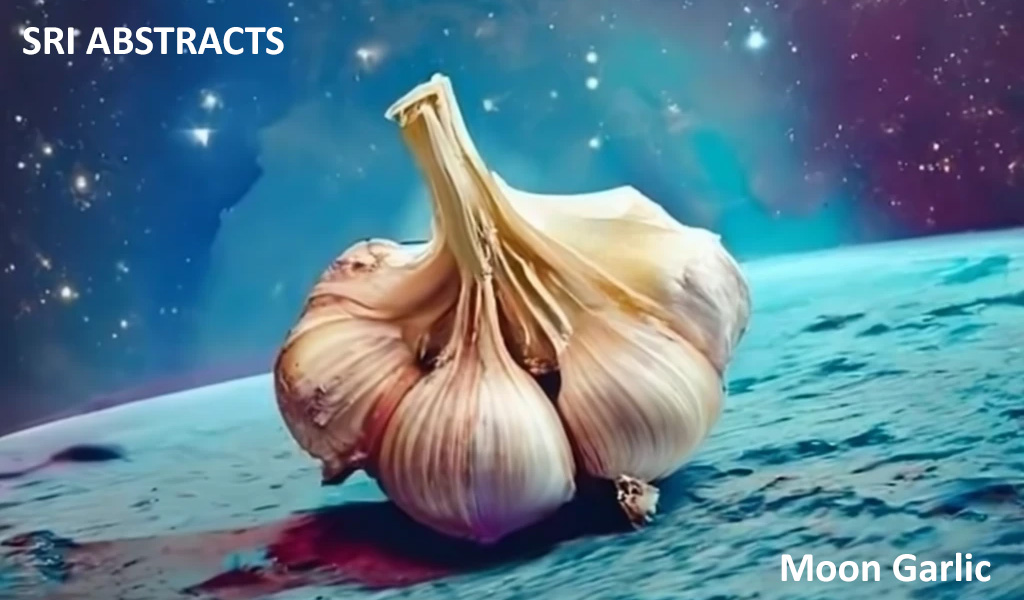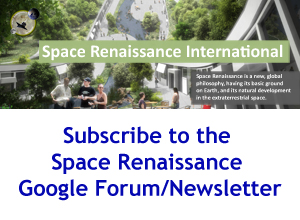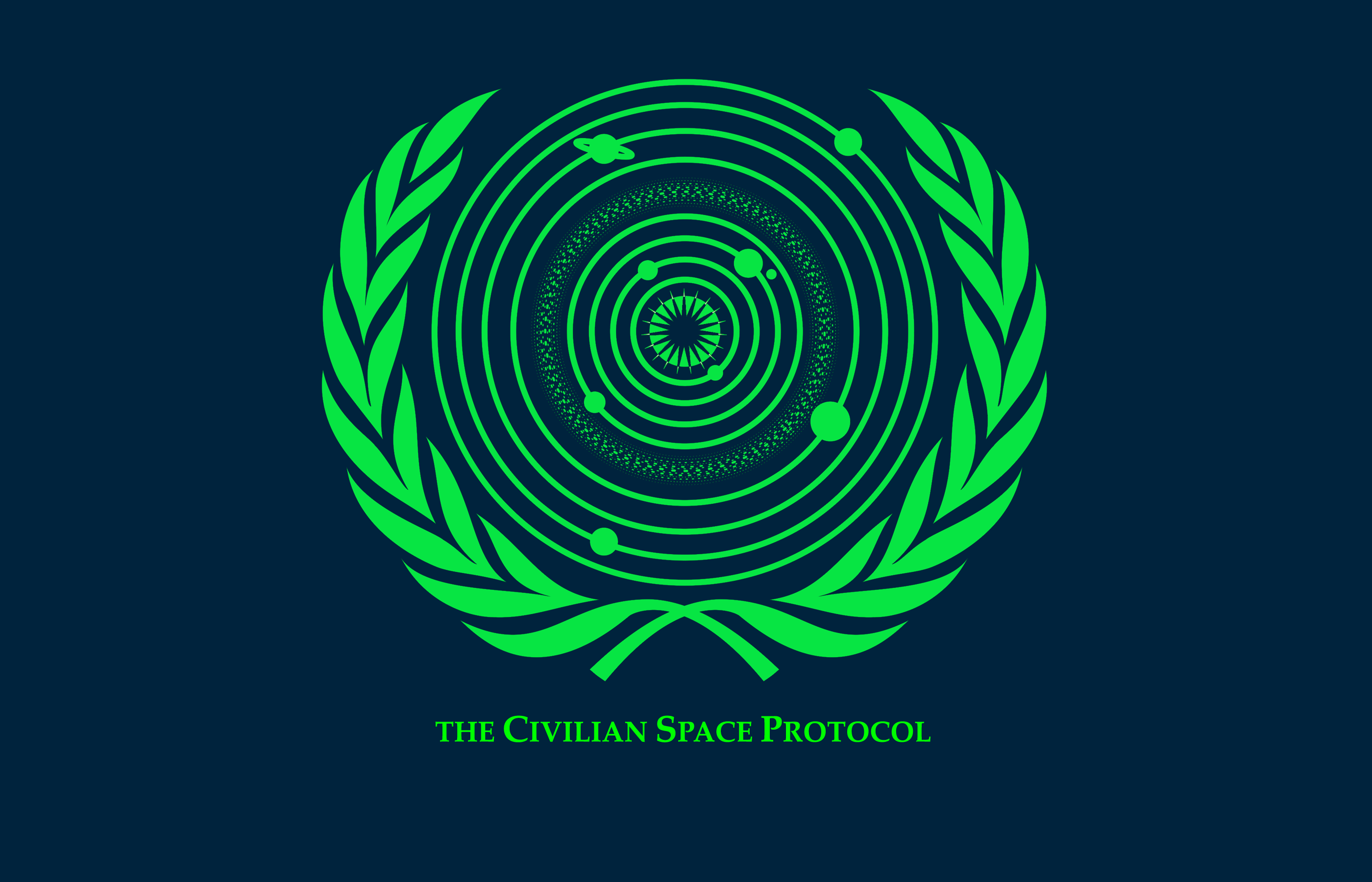
Perhaps you’ve wondered why an entity like Space Renaissance International was born, and its practical use may be… But, as Americans say, there is a logic to our madness! (:-)
There are space agencies, governmental and organizational bodies and corporate entities, working in space, across Europe, United States, Asia and many locations. There are also many public associations engaged in interchange, dissemination and educational activities, promoting space exploration and human activities in space. In Europe several original communities have emerged in recent years, enabling the spread of modern astronautic objectives through their mission. The huge success of SpaceX which has privately developed a low cost orbital launch vehicle and returned all of the stages to the ground, ready to be reused, is an remarkable example. However, it is shameful that traditional media in many countries provided little or marginal news about such a remarkable and very recent achievement. And this touches upon the logic behind our original question: what is Space Renaissance for?
Space Renaissance International (SRI for friends) is an association that promotes the human expansion into space, and that is common ground with other associations. But let’s go ahead: Space Renaissance International is a philosophical association, developing a space age philosophy, that is direly needed. And here the field becomes meaningfully narrowed, in fact we might count on the fingers of one hand the associations, or rather the institutes, that are dealing with such disciplines. In the United States, Kepler Space Institute publishes, more or less yearly, the Journal of Space Philosophy, compiling the writings of approximately thirty authors. The Astrosociology Research Institute studies the interaction between space exploration and society, both as behavior and for development, with the additional Journal of Astrosociology publication. Other philosophical and humanistic manifestos might be found through exemplary communities such as the 100 year starship and Icarus International and the SETI program (Search for Extra Terrestrial Intelligence). But outlooks in these areas are more often bounded towards the advanced technologies and not the immediate and motivating philosophies of space. Stephen Ashworth, an English astro-humanist philosopher, has drawn up several fundamental concepts outlining the purpose of astronautic humanism, and distributes a regular newsletter, analyzing space usage and related events, from a socio-evolutionary point of view. Even so one can see that resources are limited and that the field of space philosophy is only recently beginning to emerge.
The Space Renaissance International platform can certainly be considered as an early pioneer in these efforts. We aim to propose and integrate an essential philosophical ideas that arise into concrete steps, suggesting autonomous and highly personal reflection to persons who will accept to look at reality by means of a new perception of the world, about the critical issues of our time: the future of civilization, the enormous risks that we are facing, and the choices we have before us; what is not yet done and should have been done already; and what types of implementations are therefore now extremely overdue. In this sense, the specificity and usefulness of Space Renaissance is coming to light, at this point. Why do we propose these concepts that are not said elsewhere? This is because only we are looking at the technological and humanistic renaissance of humanity that blossomed in the last 100 years. That in and of itself allows us to step back from the details of different projects to analyze the state of civilization from our humanist point of view, including the primary responsibility each generation has towards our species – seven billion and a half persons –, as well as towards other sentient species, with less intellectual and cultural means but much potential for the future.
But today we’ll not develop the philosophical discourse, only draw your attention to some of the intellectual peculiarities, which are most often neglected. Our humanist concept, moving from the interests and inherent rights of all living humans and their offspring, leads us to propose the argument that humanity desperately needs to expand its world view into space, and not just to tentatively explore it, if we are to avoid, and have a positive alternative to, a holocaust of gigantic proportions. The equitable space based worldview is not isolated against itself; it includes many propositions, features and issues. Space based IT, within low earth and geo stationary orbit, gave its essential contribute to the world wide network, for global social and environmental problems solving, in support of wide scale global development. In another issue of our newsletters we’ll discuss about the overdue evolution of the unmanned commercial orbital infrastructure to a manned one, capable of the necessary maintenance, recovery and reuse of the enormous orbital space debris. Our humanist vision, a driven purpose to get nearer towards the concrete things, the substantial elements, leads us to formulate a “soft” expansion rationale, one that will allow terrestrial migrants to become inhabitants of space avoiding major physiological changes within a few generations.
This means to seriously address two problems: artificial gravity, and protection from harsh space radiation. Solving these problems would allow us to invest us in space outside of the protective shield of the Earth’s atmosphere and the Van Allen belt, which protects astronauts in low orbit, where the ISS travels. But going to the Moon, even for short term durations, let alone Mars, implies the need for much more robust types of protective shield. After all, why, fifty five years after the first human flight in orbit, have so many of these fundamental problems not been addressed? The answer is perhaps quite simple: because no one has yet seriously faced the issues of transporting civilian passengers in space. A hopeful outlook towards space agencies research and development suggest that they continue to make inquiry, and that if many problems have not yet been solved, it means that our science has not yet reached to that point. But is this statement altogether true? This question does not mean to denigrate the work of many honest researchers, who are dedicated with love and devotion to their work, achieving excellent results. Those scientists are being committed, through their directors and institutions, to develop specific fields and areas of studies and research rather than other ones. So we might ask ourselves: is the strategic vision of the agencies, and of governments establishing, sufficiently based on a humanist conception? The answer, unfortunately, might yet be: only partially.
Current spacecraft are still designed primarily bearing in mind military trained astronauts. You and we might not travel today on the Soyuz, yesterday on the Space Shuttle, as if we were taking a normal flight. We might not bear the accelerations, the on-board living conditions, and the many stresses, which we are not prepared for. Denis Tito and the other few civilian tourists who flew to the ISS have undergone the same training, which lasts several months, made by the military pilots. But, most important, they had also signed a waver, a letter of total release from liability to the agencies, after paying 30 million for a ticket! Fortunately, today a number of space tourism companies are addressing this issue and when their commercial flights will begin, initially only to suborbital altitude, passengers will fly in comfortable conditions, and with legal liabilities, similar to those of a normal commercial flight. Of course, at 100 km altitude the problem of radiation exposure is quite low, and being in weightlessness for a few minutes is a funny thing that does no physiological harm.
However these first attempts of a suborbital tourism industry represent the beginning of the needed change in paradigm, from military to civilian space flight. Even the cost of space missions has represented a determining factor, until today, keeping the high frontier firmly subject to an exclusive government control, and closed to private enterprises. Leading forward on this edge, Elon Musk is creating a true revolution: bringing ashore all the stages of the new generation launchers allows the fast reclaim and reuse of high powered engines, with a drastic reduction in the cost of ground-orbit transportation.
Back to the main issue from a humanist perspective: the protection of life and human health in space, outside the Earth’s protective shield. We need to obtain gravity conditions of 1 G, equivalent to the Earth environment, and being totally shielded from the harsh space radiation, both coming from the Sun and the cosmic sources (from supernovae). Even in the context of what we will presently call the expansionist movement, we might listen to debate about the priorities of colonizing the Moon rather than Mars. But both of these assumptions for future development do not take into account the mentioned problems. On the Moon we could protect ourselves from radiation by living underground, perhaps using the lava tubes, caves ready to be equipped and inhabited. But it still leaves the problem of gravity, equal to one sixth that of Earth. Mars has a gravity equal to one third of the Earth’s still significantly less than what we are used to. On both worlds earthling migrants would be supermen, for a few years, but then they would no longer be able to walk on Earth’s surface, and thus condemned to never return home, except for short “holidays”… on a wheelchair!
Since the first international congress of SRI, in 2011, we began working on a humanistic solution for human life in space. Gerard O’Neill had already written about and designed many of these basic concepts in the 70s of last century: large rotating toroidal colonies, placed in stable Lagrange points, where objects can reside permanently, without the need of asset or orbital correction. This concept was taken up in the movie Elysium, by Neill Blomkamp, in 2013. But if this design solves the problem of artificial gravity, it does not solve the issue of protection from radiation. Another possibility would be to capture an asteroid, among those whose orbit (unsettlingly!) passes near our planet, and to transfer it to a Langrange location, for excavation. Among other developments, we could obtain huge amounts of raw materials, oxygen, and building materials in this way. Then the asteroid could be “terraformed” inside, providing long term, radiation proof living accommodation. Certainly this is a futuristic and multi-generational enterprise involving scientific and technological knowledge within vast ranges, in addition to the formative space sciences: and extraordinary developments in the fields of architecture, civil engineering, sociology, economics, psychology, biology, agriculture, … All disciplines where we will eventually add the “exo” prefix.
On these topics, of vital importance for humanity and for all nations, while continuing the search for new industrial development lines, a public discussion should presently arise. Governments should discuss such types of forward looking dynamics, adopting policies to support the new civil astronautics industry, hold international summits, similar to the gatherings recently held for the climate change mitigation. The environmental issues took 45 years, since the first publication of the Club of Rome’s “Limits to Growth”, to gain the attention of the political leadership… but we don’t have 40 years! Civilization needs to kick off a genuine international expansion into space before 2025, if we are to avoid economic implosion and further generations of confrontation and aggression. Therefore we need the pro-space movement to develop cooperation worldwide, and political and lobbying activities and to spread these vital proposals to the Earthlings!
The Space Renaissance is blooming everywhere!
Join the Space Renaissance!
The springtime of 2016 is seeing an incredible growth of the SRI presence on the social media, Facebook mainly. Join the SRI springtime!
https://www.facebook.com/SpaceRenaissanceFrance/
https://www.facebook.com/SpaceRenaissanceIndia/
https://www.facebook.com/SpaceRenaissanceItalia/
https://www.facebook.com/SpaceRenaissanceRussia/
https://www.facebook.com/SpaceRenaissanceUSA/
https://www.facebook.com/SpaceRenaissanceUK/
https://www.facebook.com/spacerenaissanceinternationalnepal/
https://www.facebook.com/SpaceRenaissanceEspana/
https://www.facebook.com/SpaceRenaissanceNederland/
https://www.facebook.com/SpaceRenaissanceCanada/
https://www.facebook.com/spacerenaissancebosniaherzegovina/
https://www.facebook.com/SpaceRenaissanceGermany/
https://www.facebook.com/SpaceRenaissancePoland/
https://www.facebook.com/SpaceRenaissanceMexico/
https://www.facebook.com/SpaceRenaissanceSwitzerland/
https://www.facebook.com/SpaceRenaissanceAustralia/
https://www.facebook.com/SpaceRenaissanceBrasil/
https://www.facebook.com/SpaceRenaissanceMorocco/
https://www.facebook.com/groups/space.renaissance/
Do you believe in the space renaissance? Then Join the Space Renaissance Initative!
If your country does not have a national SRI chapter already, you can register as a member of Space Renaissance International, here:
https://spacerenaissance.space/build-sri-with-us/membership-2/membership/.
If you like to keep on receiving our analysis, newsletters and updates about our initiatives, please subscribe to the SRI newsletter here:
https://spacerenaissance.space/build-sri-with-us/space-renaissance-newsletter-registration/.
If you have already subscribed once, there is no need to subscribe again.
[English editing by Arthur Woods]
Voir aussi la version française (pdf)










 Space Renaissance France (French Chapter of SRI)
Space Renaissance France (French Chapter of SRI)  Space Renaissance USA, Inc. (USA Chapter of SRI)
Space Renaissance USA, Inc. (USA Chapter of SRI) Space Renaissance (Italian Chapter of SRI)
Space Renaissance (Italian Chapter of SRI) Space Renaissance Academy
Space Renaissance Academy Space Renaissance Initiative Group
Space Renaissance Initiative Group